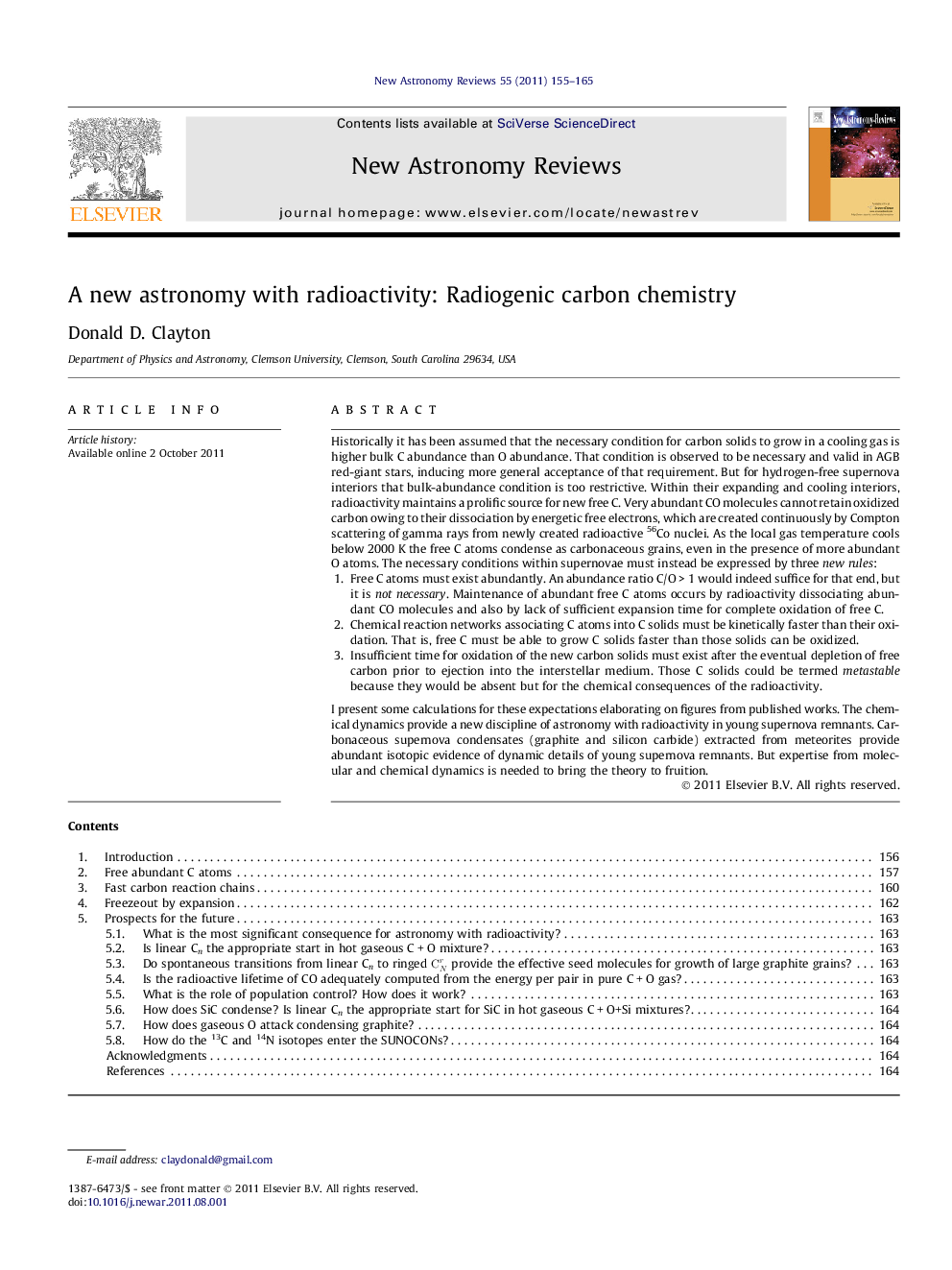| کد مقاله | کد نشریه | سال انتشار | مقاله انگلیسی | نسخه تمام متن |
|---|---|---|---|---|
| 1779953 | 1523786 | 2011 | 11 صفحه PDF | دانلود رایگان |

Historically it has been assumed that the necessary condition for carbon solids to grow in a cooling gas is higher bulk C abundance than O abundance. That condition is observed to be necessary and valid in AGB red-giant stars, inducing more general acceptance of that requirement. But for hydrogen-free supernova interiors that bulk-abundance condition is too restrictive. Within their expanding and cooling interiors, radioactivity maintains a prolific source for new free C. Very abundant CO molecules cannot retain oxidized carbon owing to their dissociation by energetic free electrons, which are created continuously by Compton scattering of gamma rays from newly created radioactive 56Co nuclei. As the local gas temperature cools below 2000 K the free C atoms condense as carbonaceous grains, even in the presence of more abundant O atoms. The necessary conditions within supernovae must instead be expressed by three new rules:1.Free C atoms must exist abundantly. An abundance ratio C/O > 1 would indeed suffice for that end, but it is not necessary. Maintenance of abundant free C atoms occurs by radioactivity dissociating abundant CO molecules and also by lack of sufficient expansion time for complete oxidation of free C.2.Chemical reaction networks associating C atoms into C solids must be kinetically faster than their oxidation. That is, free C must be able to grow C solids faster than those solids can be oxidized.3.Insufficient time for oxidation of the new carbon solids must exist after the eventual depletion of free carbon prior to ejection into the interstellar medium. Those C solids could be termed metastable because they would be absent but for the chemical consequences of the radioactivity.I present some calculations for these expectations elaborating on figures from published works. The chemical dynamics provide a new discipline of astronomy with radioactivity in young supernova remnants. Carbonaceous supernova condensates (graphite and silicon carbide) extracted from meteorites provide abundant isotopic evidence of dynamic details of young supernova remnants. But expertise from molecular and chemical dynamics is needed to bring the theory to fruition.
Journal: New Astronomy Reviews - Volume 55, Issues 5–6, November–December 2011, Pages 155–165